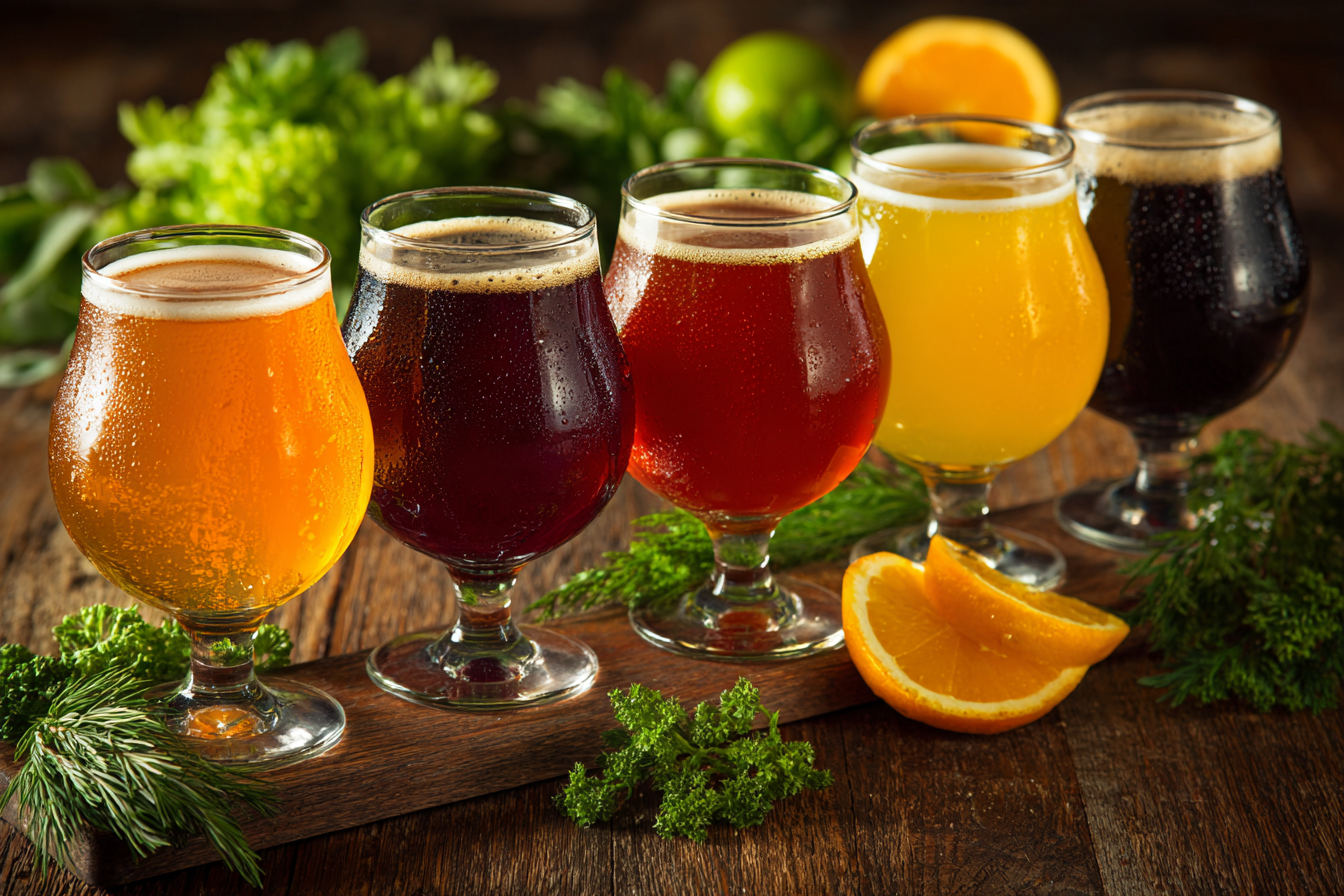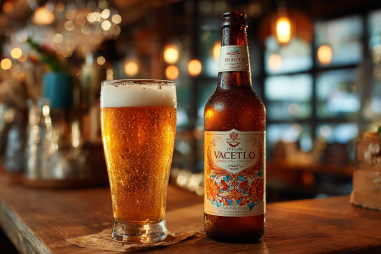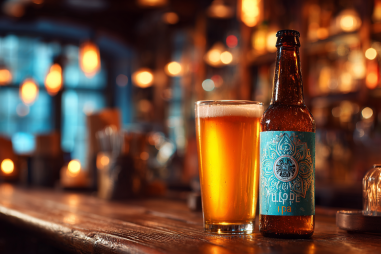American wild beers offer a fascinating journey into the world of craft brewing’s most adventurous styles. Known for their unexpected and complex flavors, these brews captivate enthusiasts with a spectrum of tastes that range from effervescent tartness to earthy funk. At the heart of this flavor adventure lies the use of wild yeast strains and bacteria that create truly unique profiles. Let’s dive deep into what makes American wild beers so special and explore the deliciously innovative flavor profiles that have taken the craft beer scene by storm.
What Defines Flavor Profiles in American Wild Beers
Flavor profiles in American wild beers are defined by a blend of natural microbial activity, fermentation processes, and brewing creativity. Unlike traditional beers brewed with cultivated yeast strains, wild beers embrace unconventional yeast and bacteria that ferment the beer in spontaneous or controlled wild fermentation. The flavors that emerge can be surprising and multifaceted, ranging from sharp acidity to rich savory funk. This flavor diversity is a hallmark of wild beers, setting them apart from more predictable beer styles.
These beers often showcase layered complexities that unfold over time on the palate. Factors such as the origin and mix of microbes, fermentation conditions, and aging techniques all interact to develop distinct flavor signatures. The result? Each bottle or batch can offer a singular tasting experience full of vibrant and evolving flavors.
The Role of Wild Yeast and Bacteria in Flavor Development
The magic of American wild beer largely comes from the microbes responsible for fermentation. Two primary players—wild yeast (such as Brettanomyces) and bacteria (including Lactobacillus and Pediococcus)—impart the hallmark flavors that define these beers.
Wild yeast strains like Brettanomyces contribute complex aromas and tastes often described as “funky,” “barnyard,” or “earthy.” Unlike the clean and straightforward fermentation of traditional brewer’s yeast, Brettanomyces produces a medley of phenolic compounds that add intriguing smoky, spicy, and woody notes. It also often ferments more complex sugars, resulting in drier finishes and bold character.
Bacteria such as Lactobacillus and Pediococcus drive sourness and acidity. Lactobacillus typically imparts a fresh, crisp tartness reminiscent of yogurt or green apple, whereas Pediococcus can add deeper, more intense sour flavors with a slight buttery or earthy undertone. The balance between these bacteria and wild yeast determines the final flavor harmony, whether sharply sour or subtly tangy with layers of funk.
Common Flavor Notes: Tartness, Funk, Fruitiness, Earthiness
When tasting American wild beers, several common flavor notes tend to emerge, each contributing to their distinctive character.
- Tartness: A defining characteristic of many wild beers, tartness brightens the palate with lively acidity. This can range from gently zesty lemon-lime acidity to mouth-puckering sourness reminiscent of green apple or citrus zest.
- Funk: Often described as “barnyard” or “horse blanket,” funk is the earthy, slightly musty flavor introduced primarily by Brettanomyces yeast. It adds a wild, rustic complexity that can evoke damp forests, leather, or fresh hay.
- Fruitiness: Wild yeasts can produce esters and phenols that lend fruity aromas and tastes, from tropical fruits like pineapple and mango to berries, stone fruit, or even dried fruit notes. These flavors create a delightful contrast to the acidity and funk.
- Earthiness: A grounding note common in barrel-aged wild beers, earthiness can include flavors reminiscent of mushrooms, wet soil, and forest floor elements. This depth adds richness and an organic feel to the beer’s profile.
How Barrel Aging Influences Taste
Barrel aging is a crucial technique in crafting many American wild beers, enhancing their flavor complexity through interaction with wood and slow maturation. When beer is aged in barrels—often used previously for wine, whiskey, or bourbon—the flavors of the barrel’s contents and wood tannins integrate with the beer’s natural microbes.
The porous nature of barrels allows oxygen to gently interact with the beer, encouraging the development of nuanced flavors over months or even years. Wood imparts subtle vanilla, toast, or caramel notes, while the residual spirits add warmth and richness. Moreover, barrels serve as a habitat for wild yeast and bacteria, supporting continued fermentation and flavor evolution.
This process results in wild beers with rounder, deeper profiles that blend tartness, funk, and woodsy earthiness in harmonious layers. Barrel aging can also mellow intense acidity, making the beer more approachable and balanced.
Pairing American Wild Beers with Food
The versatile and vibrant flavors of American wild beers make them exceptional companions for a wide range of dishes. Their acidity and funkiness can cut through rich foods or complement fresh, flavorful ingredients.
- Cheese: The tartness and funk of wild beers pair wonderfully with aged cheeses like sharp cheddar, blue cheese, or alpine varieties. The beer’s acidity cleanses the palate while enhancing the cheese’s flavors.
- Charcuterie: Salty cured meats such as prosciutto, coppa, or soppressata gain an exciting contrast when paired with the fruity, sour notes of wild beer.
- Seafood: Dishes like oysters or smoked salmon match beautifully with crisp, citrusy wild beers, emphasizing freshness and brininess.
- Spicy cuisine: The acidity and effervescence can soothe heat and amplify spice in dishes like Thai or Mexican cuisine.
- Roasted or grilled meats: Earthy funk and barrel-aged notes complement the caramelized flavors of grilled pork, lamb, or beef.
Popular American Wild Beer Examples Illustrating Profiles
Several American craft breweries have become renowned for their masterful wild beers, each showcasing distinct flavor profiles.
- Westbrook Brewing’s Gose: Tart and salty with hints of coriander and citrus, this wild beer highlights bright acidity and refreshing funk.
- Jolly Pumpkin Artisan Ales: Known for rustic, barrel-aged sours with expressive funk and complex earthy character.
- Russian River’s Beatification: A bottle-conditioned sour farmhouse ale with balanced funk, fruity esters, and mild tartness.
- Allagash Curieux: Bourbon barrel-aged with notes of vanilla and oak intertwined with wild yeast complexity.
- The Bruery Terreux Saison Rue: A funky, spicy saison featuring Brettanomyces-driven earthiness and lively carbonation.
Tips for Tasting and Appreciating Wild Beer Flavors
Tasting wild beers requires an open mind and attention to detail to fully appreciate their nuances. Here are some tips to enhance your wild beer experience:
- Use appropriate glassware: Wide-mouthed glasses or tulip-shaped glasses concentrate aromas and allow the beer to breathe, highlighting flavor complexity.
- Pour slowly: To capture the aroma and maintain carbonation, pour gently at an angle.
- Smell first: Take a sniff before sipping to identify funk, fruit, or earthy aromas that signal style and character.
- Savor slowly: Allow the flavors to develop on your palate, noting the balance between sourness, sweetness, and funk.
- Pair thoughtfully: Experiment with different foods to discover how flavors interact and enhance one another.
- Take notes: Recording tasting impressions helps you learn and distinguish subtle differences over time.
Embracing Flavor Diversity in Wild Beer
American wild beers represent one of the most exciting frontiers in craft brewing, where creativity and nature converge. Their flavor profiles are as diverse as the microbes that shape them, offering everything from refreshing tartness to deep, funky complexities. Exploring these beers invites drinkers to expand their palates and discover truly unique tasting experiences. By embracing the unpredictable nature of wild fermentation, craft brewers continue to push boundaries and delight enthusiasts seeking innovation and flavor diversity in every bottle.







